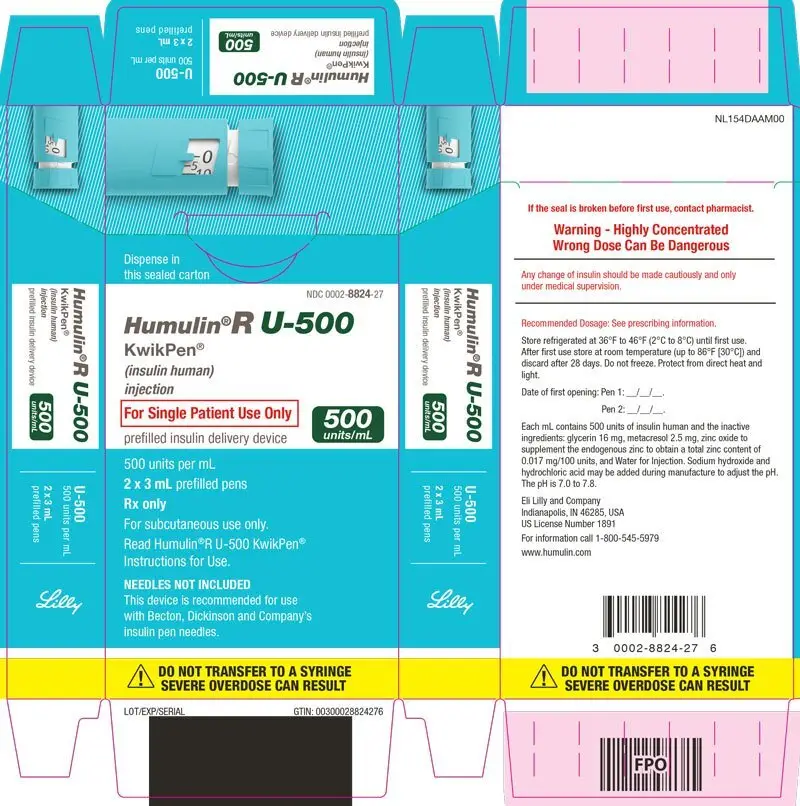Drug Detail:Humulin r (concentrated) (u-500) (Insulin regular, concentrated (u-500) [ in-soo-lin ])
Drug Class: Insulin
Highlights of Prescribing Information
HUMULIN R U-500 (insulin human) injection, for subcutaneous use
Initial U.S. Approval: 1994
Indications and Usage for Humulin R U-500
HUMULIN® R U-500 is a concentrated human insulin indicated to improve glycemic control in adults and pediatric patients with diabetes mellitus requiring more than 200 units of insulin per day. (1)
Limitation of Use: The safety and efficacy of HUMULIN R U-500 used in combination with other insulins has not been determined. The safety and efficacy of HUMULIN R U-500 delivered by continuous subcutaneous infusion has not been determined. (1.1)
Humulin R U-500 Dosage and Administration
- Adhere to administration instructions to reduce the risk of dosing errors. (2.1, 2.3, 2.4, 5.1)
- HUMULIN R U-500 is available as a single-patient-use KwikPen or multiple-dose vial. Patients using the vial must be prescribed the U-500 insulin syringe to avoid medication errors. (2.1)
- Individualize dose of HUMULIN R U-500 based on metabolic needs, blood glucose monitoring results and glycemic control goal. (2.2)
- Administer HUMULIN R U-500 subcutaneously two or three times daily 30 minutes before a meal into the thigh, upper arm, abdomen, or buttocks. Rotate injection sites to reduce risk of lipodystrophy and localized cutaneous amyloidosis. (2.1, 2.2)
- Do NOT mix HUMULIN R U-500 with other insulins. (2.1)
- Do NOT administer HUMULIN R U-500 intravenously (2.1)
- Do NOT perform dose conversion when using the HUMULIN R U-500 KwikPen. The dose window of the HUMULIN R U-500 KwikPen shows the number of units of HUMULIN R U-500 to be injected. (2.3)
- Do NOT transfer HUMULIN R U-500 from the HUMULIN R U-500 KwikPen into any syringe. (2.3)
- Do NOT perform dose conversion when using a U-500 insulin syringe. Use only a U-500 insulin syringe with the HUMULIN R U-500 vial. (2.4)
Dosage Forms and Strengths
Injection: 500 units/mL (U-500) available as: (3)
- 3 mL single-patient-use HUMULIN® R U-500 KwikPen® prefilled pen (containing 1,500 units of insulin)
- 20 mL multiple-dose vial (containing 10,000 units of insulin)
Contraindications
- Do not use during episodes of hypoglycemia. (4)
- Do not use in patients with hypersensitivity to HUMULIN R U-500 or any of its excipients. (4)
Warnings and Precautions
- Hyperglycemia, Hypoglycemia or Death due to Dosing Errors with Vial Presentation: Can be life-threatening. Overdose has occurred as a result of dispensing, prescribing or administration errors. Attention to details at all levels is required to prevent these errors. (2.1, 2.3, 2.4, 5.1)
- Never share a HUMULIN R U-500 KwikPen or U-500 insulin syringe between patients, even if the needle is changed. (5.2)
- Hyperglycemia or Hypoglycemia with Changes in Insulin Regimen: Make changes to a patient's insulin regimen (e.g., insulin strength, manufacturer, type, injection site or method of administration) under close medical supervision with increased frequency of blood glucose monitoring. (5.3)
- Hypoglycemia: May be life-threatening. Increase monitoring with changes to: insulin dosage, co-administered glucose lowering medications, meal pattern, physical activity; and in patients with renal impairment or hepatic impairment or hypoglycemia unawareness. (5.4)
- Hypersensitivity Reactions: Severe, life-threatening, generalized allergy, including anaphylaxis, can occur. Discontinue HUMULIN R U-500, monitor, and treat if indicated. (5.5)
- Hypokalemia: May be life-threatening. Monitor potassium levels in patients at risk for hypokalemia and treat if indicated. (5.6)
- Fluid Retention and Heart Failure with Concomitant Use of Thiazolidinediones (TZDs): Observe for signs and symptoms of heart failure; consider dosage reduction or discontinuation if heart failure occurs. (5.7)
Adverse Reactions/Side Effects
Adverse reactions associated with HUMULIN R U-500 include hypoglycemia, allergic reactions, injection site reactions, lipodystrophy, pruritus, and rash. (6)
To report SUSPECTED ADVERSE REACTIONS, contact Eli Lilly and Company at 1-800-LillyRx (1-800-545-5979) or FDA at 1-800-FDA-1088 or www.fda.gov/medwatch.
Drug Interactions
- Drugs that Affect Glucose Metabolism: Adjustment of insulin dosage may be needed. (7)
- Antiadrenergic Drugs (e.g., beta-blockers, clonidine, guanethidine, and reserpine): Signs and symptoms of hypoglycemia may be reduced or absent. (5.3, 7)
See 17 for PATIENT COUNSELING INFORMATION and FDA-approved patient labeling.
Revised: 6/2022
Related/similar drugs
metformin, Trulicity, Lantus, Victoza, Tresiba, Levemir, NovologFull Prescribing Information
1. Indications and Usage for Humulin R U-500
HUMULIN R U-500 is a concentrated human insulin indicated to improve glycemic control in adult and pediatric patients with diabetes mellitus requiring more than 200 units of insulin per day.
2. Humulin R U-500 Dosage and Administration
2.1 Important Administration Instructions
- Prescribe HUMULIN R U-500 ONLY to patients who require more than 200 units of insulin per day.
- HUMULIN R U-500 is available as a single-patient-use KwikPen or multiple-dose vial. Patients using the vial must be prescribed the U-500 insulin syringe to avoid medication errors.
- Instruct patients using the vial presentation to use only a U-500 insulin syringe and on how to correctly draw the prescribed dose of HUMULIN R U-500 into the U-500 insulin syringe. Confirm that the patient has understood these instructions and can correctly draw the prescribed dose of HUMULIN R U-500 with their syringe [see Dosage and Administration (2.4) and Warnings and Precautions (5.1)].
- Instruct patients to always check the insulin label before administration to confirm the correct insulin product is being used [see Warnings and Precautions (5.1)].
- Inspect HUMULIN R U-500 visually for particulate matter and discoloration. Only use HUMULIN R U-500 if the solution appears clear and colorless.
- Instruct patients to inject HUMULIN R U-500 subcutaneously into the thigh, upper arm, abdomen, or buttocks.
- Rotate injection sites within the same region from one injection to the next to reduce the risk of lipodystrophy and localized cutaneous amyloidosis. Do not inject into areas of lipodystrophy or localized cutaneous amyloidosis [see Warnings and Precautions (5.3) and Adverse Reactions (6)].
- During changes to a patient's insulin regimen, increase the frequency of blood glucose monitoring [see Warnings and Precautions (5.3)].
- Use HUMULIN R U-500 KwikPen with caution in patients with visual impairment that may rely on audible clicks to dial their dose.
- DO NOT administer HUMULIN R U-500 intravenously.
- DO NOT dilute or mix HUMULIN R U-500 with any other insulin products or solutions.
2.2 Dosing Instructions
- Instruct patients to inject HUMULIN R U-500 subcutaneously usually two or three times daily approximately 30 minutes before meals.
- Individualize and titrate the dosage of HUMULIN R U-500 based on the patient's metabolic needs, blood glucose monitoring results, and glycemic control goal.
- Dosage adjustments may be needed with changes in physical activity, changes in meal patterns (i.e., macronutrient content or timing of food intake), changes in renal or hepatic function, changes in medications or during acute illness to minimize the risk of hypoglycemia or hyperglycemia [see Warnings and Precautions (5.3)].
2.3 Delivery of HUMULIN R U-500 Using the HUMULIN R U-500 Disposable Prefilled KwikPen Device
- The HUMULIN R U-500 KwikPen dials in 5 unit increments and delivers a maximum dose of 300 units per injection.
- DO NOT perform dose conversion when using the HUMULIN R U-500 KwikPen. The dose window of the HUMULIN R U-500 KwikPen shows the number of units of HUMULIN R U-500 to be injected and NO dose conversion is required.
- DO NOT transfer HUMULIN R U-500 from the HUMULIN R U-500 KwikPen into any syringe for administration as overdose and severe hypoglycemia can occur [see Warnings and Precautions (5.4)].
2.4 Delivery of HUMULIN R U-500 Using the Vial Presentation and the U-500 Insulin Syringe
- DO NOT perform dose conversion when using a U-500 insulin syringe. The markings on the U-500 insulin syringe show the number of units of HUMULIN R U-500 to be injected.
- Each marking on the syringe represents 5 units of insulin.
- Prescribe patients a U-500 insulin syringe to administer HUMULIN R U-500 from the vial to avoid administration errors. DO NOT use any other type of syringe [see Warnings and Precautions (5.1)].
3. Dosage Forms and Strengths
Injection: 500 units/mL (U-500) clear, colorless solution available as:
- 3 mL single-patient-use HUMULIN R U-500 KwikPen prefilled pen (containing 1,500 units of insulin)
- 20 mL multiple-dose vial (containing 10,000 units of insulin)
4. Contraindications
HUMULIN R U-500 is contraindicated:
- During episodes of hypoglycemia [see Warnings and Precautions (5.4)]
- In patients who are hypersensitive to HUMULIN R U-500 or any of its excipients [see Warnings and Precautions (5.5)]
5. Warnings and Precautions
5.1 Hyperglycemia, Hypoglycemia or Death Due to Dosing Errors with the Vial Presentation
Medication errors associated with the HUMULIN R U-500 vial presentation resulting in patients experiencing hyperglycemia, hypoglycemia or death have been reported. The majority of errors occurred due to errors in dispensing, prescribing or administration. Attention to details at all levels may prevent these errors.
Dispensing Errors
Instruct patients to always inspect insulin vials to confirm that the correct insulin is dispensed including the correct insulin brand and concentration.
The HUMULIN R U-500 vial, which contains 20 mL, has a band of aqua coloring, a 500 units/mL concentration statement consisting of white lettering on a green rectangular background, and a green “U-500” statement prominently displayed next to the trade name. Additionally, the vial has a green flip top and a red warning on the front panel describing the highly concentrated dose and a statement advising use with only U-500 insulin syringes.
Prescribing Errors
Dosing errors have occurred when the HUMULIN R U-500 dose was administered with syringes other than a U-500 insulin syringe. Patients should be prescribed U-500 syringes for use with the HUMULIN R U-500 vials. The prescribed dose of HUMULIN R U-500 should always be expressed in units of insulin [see Dosage and Administration (2.4)].
Administration Errors
Instruct patients to always check the insulin label before each injection.
Use only a U-500 insulin syringe with HUMULIN R U-500 to avoid administration errors. Do not use any other type of syringe to administer Humulin R U-500. Adhere to administration instructions [see Dosage and Administration (2.1, 2.4)].
Instruct the patient to inform hospital or emergency department staff of the dose of HUMULIN R U-500 prescribed, in the event of a future hospitalization or visit to the emergency department.
5.2 Never Share a HUMULIN R U-500 KwikPen or U-500 Insulin Syringe Between Patients
HUMULIN R U-500 KwikPens should never be shared between patients, even if the needle is changed. Patients using HUMULIN R U-500 vials should never share needles or U-500 insulin syringes with another person. Sharing poses a risk for transmission of blood-borne pathogens.
5.3 Hyperglycemia or Hypoglycemia with Changes in Insulin Regimen
Changes in an insulin regimen (e.g., insulin strength, manufacturer, type, injection site or method of administration) may affect glycemic control and predispose to hypoglycemia [see Warnings and Precautions (5.4)] or hyperglycemia. Repeated insulin injections into areas of lipodystrophy or localized cutaneous amyloidosis have been reported to result in hyperglycemia; and a sudden change in the injection site (to an unaffected area) has been reported to result in hypoglycemia [see Adverse Reactions (6)].
Make any changes to a patient's insulin regimen under close medical supervision with increased frequency of blood glucose monitoring. Advise patients who have repeatedly injected into areas of lipodystrophy or localized cutaneous amyloidosis to change the injection site to unaffected areas and closely monitor for hypoglycemia. For patients with type 2 diabetes, adjustments in concomitant oral anti-diabetic treatment may be needed.
5.4 Hypoglycemia
Hypoglycemia is the most common adverse reaction associated with insulins, including HUMULIN R U-500. Severe hypoglycemia can cause seizures, may be life-threatening or cause death. Severe hypoglycemia may develop as long as 18 to 24 hours after an injection of HUMULIN R U-500. Hypoglycemia can impair concentration ability and reaction time; this may place the patient and others at risk in situations where these abilities are important (e.g., driving, or operating other machinery).
Hypoglycemia can happen suddenly and symptoms may differ in each patient and change over time in the same patient. Symptomatic awareness of hypoglycemia may be less pronounced in patients with longstanding diabetes, in patients with diabetic neuropathy, in patients using medications that block the sympathetic nervous system (e.g., beta-blockers) [see Drug Interactions (7.3, 7.4)], or in patients who experience recurrent hypoglycemia.
Risk Factors for Hypoglycemia
The timing of hypoglycemia usually reflects the time-action profile of the administered insulin formulation. As with all insulin preparations, the glucose lowering effect time course of HUMULIN R U-500 may vary in different individuals or at different times in the same individual and depends on many conditions, including the area of injection as well as the injection site blood supply and temperature.
Other factors which may increase the risk of hypoglycemia include changes in meal pattern (e.g., macronutrient content or timing of meals), changes in level of physical activity, or changes to concomitant drugs [see Drug Interactions (7.1, 7.2, 7.3, 7.4)]. Patients with renal or hepatic impairment may be at higher risk of hypoglycemia [see Use in Specific Populations (8.6, 8.7)].
Risk Mitigation Strategies for Hypoglycemia
Patients and caregivers must be educated to recognize and manage hypoglycemia. Self-monitoring of blood glucose plays an essential role in the prevention and management of hypoglycemia. In patients at higher risk for hypoglycemia and patients who have reduced symptomatic awareness of hypoglycemia, increased frequency of blood glucose monitoring is recommended. To minimize the risk of hypoglycemia do not administer HUMULIN R U-500 intravenously or in an insulin pump or dilute or mix HUMULIN R U-500 with any other insulin products or solutions [see Dosage and Administration (2.1)].
5.5 Hypersensitivity Reactions
Severe, life-threatening, generalized allergy, including anaphylaxis, can occur with insulins, including HUMULIN R U-500. If hypersensitivity reactions occur, discontinue HUMULIN R U-500; treat per standard of care and monitor until symptoms and signs resolve [see Adverse Reactions (6)].
5.6 Hypokalemia
All insulins, including HUMULIN R U-500, cause a shift in potassium from the extracellular to intracellular space, possibly leading to hypokalemia. Untreated hypokalemia may cause respiratory paralysis, ventricular arrhythmia, and death. Use caution in patients who may be at risk for hypokalemia (e.g., patients using potassium-lowering medications, patients taking medications sensitive to serum potassium concentrations).
5.7 Fluid Retention and Heart Failure with Concomitant Use of PPAR-gamma Agonists
Thiazolidinediones (TZDs), which are peroxisome proliferator-activated receptor (PPAR)-gamma agonists, can cause dose-related fluid retention, when used in combination with insulin. Fluid retention may lead to or exacerbate heart failure. Patients treated with insulin, including HUMULIN R U-500, and a PPAR-gamma agonist should be observed for signs and symptoms of heart failure. If heart failure develops, it should be managed according to current standards of care, and discontinuation or dose reduction of the PPAR-gamma agonist must be considered.
6. Adverse Reactions/Side Effects
The following adverse reactions are discussed elsewhere:
- Hypoglycemia [see Warnings and Precautions (5.4)].
- Hypersensitivity Reactions [see Warnings and Precautions (5.5)].
- Hypokalemia [see Warnings and Precautions (5.6)].
The following additional adverse reactions have been identified during post-approval use of HUMULIN R U-500. Because these reactions are reported voluntarily from a population of uncertain size, it is not always possible to reliably estimate their frequency or to establish a causal relationship to drug exposure.
Hypoglycemia
Hypoglycemia is the most commonly observed adverse reaction in patients using insulin, including HUMULIN R U-500.
Allergic Reactions
Severe, life-threatening, generalized allergy, including anaphylaxis, generalized skin reactions, rash, angioedema, bronchospasm, hypotension, and shock may occur with insulins, including HUMULIN R U-500 and may be life threatening.
Lipodystrophy
Long-term use of insulin, including HUMULIN R U-500, can cause lipodystrophy at the site of repeated insulin injections. Lipodystrophy includes lipohypertrophy (thickening of adipose tissue) and lipoatrophy (thinning of adipose tissue) and may affect insulin absorption. Rotate insulin injections sites within the same region to reduce the risk of lipodystrophy [see Dosage and Administration (2.1)].
Localized Cutaneous Amyloidosis
Localized cutaneous amyloidosis at the injection site has occurred. Hyperglycemia has been reported with repeated insulin injections into areas of localized cutaneous amyloidosis; hypoglycemia has been reported with a sudden change to an unaffected injection site.
Injection Site Reactions
Patients taking HUMULIN R U-500 may experience injection site reactions, including injection site hematoma, pain, hemorrhage, erythema, nodules, swelling, discoloration, pruritus, warmth, and injection site mass.
Weight Gain
Weight gain can occur with insulins, including HUMULIN R U-500, and has been attributed to the anabolic effects of insulin.
Peripheral Edema
Insulins, including HUMULIN R U-500, may cause sodium retention and edema, particularly if previously poor metabolic control is improved by intensified insulin therapy.
Immunogenicity
As with all therapeutic proteins, insulin administration may cause anti-insulin antibodies to form. The presence of antibodies that affect clinical efficacy may necessitate dose adjustments to correct for tendencies toward hyper- or hypoglycemia.
The incidence of antibody formation with HUMULIN R U-500 is unknown.
7. Drug Interactions
| Drugs That May Increase the Risk of Hypoglycemia | |
| Drugs: | Antidiabetic agents, ACE inhibitors, angiotensin II receptor blocking agents, disopyramide, fibrates, fluoxetine, monoamine oxidase inhibitors, pentoxifylline, pramlintide, salicylates, somatostatin analog (e.g., octreotide), and sulfonamide antibiotics. |
| Intervention: | Dose adjustment and increased frequency of glucose monitoring may be required when HUMULIN R U-500 is co-administered with these drugs. |
| Drugs That May Decrease the Blood Glucose Lowering Effect of HUMULIN R U 500 | |
| Drugs: | Atypical antipsychotics (e.g., olanzapine and clozapine), corticosteroids, danazol, diuretics, estrogens, glucagon, isoniazid, niacin, oral contraceptives, phenothiazines, progestogens (e.g., in oral contraceptives), protease inhibitors, somatropin, sympathomimetic agents (e.g., albuterol, epinephrine, terbutaline), and thyroid hormones. |
| Intervention: | Dose adjustment and increased frequency of glucose monitoring may be required when HUMULIN R U-500 is co-administered with these drugs. |
| Drugs That May Increase or Decrease the Blood Glucose Lowering Effect of HUMULIN R U 500 | |
| Drugs: | Alcohol, beta-blockers, clonidine, and lithium salts. Pentamidine may cause hypoglycemia, which may sometimes be followed by hyperglycemia. |
| Intervention: | Dose adjustment and increased frequency of glucose monitoring may be required when HUMULIN R U-500 is co-administered with these drugs. |
| Drugs That May Blunt Signs and Symptoms of Hypoglycemia | |
| Drugs: | Beta-blockers, clonidine, guanethidine and reserpine |
| Intervention: | Increased frequency of glucose monitoring may be required when HUMULIN R U-500 is co-administered with these drugs. |
8. Use In Specific Populations
8.1 Pregnancy
Risk Summary
Available data from published studies over decades have not established an association with human insulin use during pregnancy and major birth defects, miscarriage, or adverse maternal or fetal outcomes (see Data). There are risks to the mother and fetus associated with poorly controlled diabetes in pregnancy (see Clinical Considerations). Animal reproduction studies were not performed.
The estimated background risk of major birth defects is 6-10% in women with pre-gestational diabetes with a HbA1c >7% and has been reported to be as high as 20-25% in women with a HbA1c >10%. The estimated background risk of miscarriage for the indicated population is unknown. In the U.S. general population, the estimated background risk of major birth defects and miscarriage in clinically recognized pregnancies is 2-4% and 15-20%, respectively.
Clinical Considerations
Disease-associated maternal and/or embryo/fetal risk
Poorly controlled diabetes in pregnancy increases the maternal risk for diabetic ketoacidosis, pre-eclampsia, spontaneous abortions, preterm delivery, and delivery complications. Poorly controlled diabetes increases the fetal risk for major birth defects, stillbirth, and macrosomia-related morbidity.
Data
Human Data
While available studies cannot definitively establish the absence of risk, published data from retrospective studies, open-label, randomized, parallel studies and meta-analyses over decades have not established an association with human insulin use during pregnancy and major birth defects, miscarriage, or adverse maternal or fetal outcomes. All available studies have methodological limitations, including lack of blinding, unclear methods or randomization, and small sample size.
8.2 Lactation
Risk Summary
Available data from published literature suggests that exogenous human insulin products, including HUMULIN R U-500, are transferred into human milk. There are no adverse reactions reported in breastfed infants in the literature. There are no data on the effects of exogenous human insulin products, including HUMULIN R U-500 on milk production. The developmental and health benefits of breastfeeding should be considered along with the mother's clinical need for HUMULIN R U-500 and any potential adverse effects on the breastfed child from HUMULIN R U-500 or from the underlying maternal condition.
8.4 Pediatric Use
The safety and effectiveness of HUMULIN R U-500 in pediatric patients with diabetes mellitus requiring more than 200 units of insulin per day to improve glycemic control have been established. Use of HUMULIN R U-500 for this indication is supported by evidence from studies with other insulin human in pediatric patients with type 1 diabetes mellitus and from studies in adults with diabetes mellitus. Standard precautions as applied to use of HUMULIN R U-500 in adults are appropriate for use in pediatric patients.
8.5 Geriatric Use
The effect of age on the pharmacokinetics and pharmacodynamics of HUMULIN R U-500 has not been studied. Caution should be exercised when HUMULIN R U-500 is administered to geriatric patients. In elderly patients with diabetes, the initial dosing, dose increments, and maintenance dosage should be conservative to avoid hypoglycemia.
10. Overdosage
Excess insulin administration may cause hypoglycemia and hypokalemia. Mild episodes of hypoglycemia usually can be treated with oral glucose. Adjustments in drug dosage, meal patterns, or exercise may be needed. More severe episodes with coma, seizure, or neurologic impairment may be treated with a glucagon product for emergency use or concentrated intravenous glucose. Sustained carbohydrate intake and observation may be necessary because hypoglycemia may recur after apparent clinical recovery. Hypokalemia must be corrected appropriately.
11. Humulin R U-500 Description
Insulin human is produced by recombinant DNA technology utilizing a non-pathogenic laboratory strain of Escherichia coli and has the empirical formula C257H383N65O77S6 with a molecular weight of 5.808 kDa.
HUMULIN R U-500 (insulin human) injection is a sterile, aqueous, and colorless solution for subcutaneous use. HUMULIN R U-500 contains 500 units of insulin human in each milliliter. Each milliliter of HUMULIN R U-500 also contains glycerin (16 mg), metacresol (2.5 mg), zinc oxide to supplement the endogenous zinc to obtain a total zinc content of 0.017 mg/100 units, and Water for Injection. Sodium hydroxide and hydrochloric acid may be added during manufacture to adjust the pH. The pH is 7.0 to 7.8.
12. Humulin R U-500 - Clinical Pharmacology
12.1 Mechanism of Action
Regulation of glucose metabolism is the primary activity of insulins, including HUMULIN R U-500. Insulins lower blood glucose by stimulating peripheral glucose uptake by skeletal muscle and fat, and by inhibiting hepatic glucose production. Insulins inhibit lipolysis and proteolysis, and enhance protein synthesis.
12.2 Pharmacodynamics
In a euglycemic clamp study of 24 healthy obese subjects (BMI=30-39 kg/m2), single doses of HUMULIN R U-500 at 50 units (0.4-0.6 unit/kg) and 100 units (0.8-1.3 unit/kg) resulted in a mean time of onset of action of less than 15 minutes at both doses and a mean duration of action of 21 hours (range 13-24 hours). The time action characteristics reflect both prandial and basal activity, consistent with clinical experience. This effect has been attributed to the high concentration of the preparation.
Figure 1 should be considered a representative example since the time course of action of insulin may vary in different individuals or within the same individual. The rate of insulin absorption and consequently the onset of activity is known to be affected by the site of injection, exercise, and other variables [see Warnings and Precautions (5.3)].
12.3 Pharmacokinetics
Absorption — In a euglycemic clamp study of 24 healthy obese subjects, the median peak insulin level occurred between 4 hours (50 unit dose) and 8 hours (100 unit dose) with a range of 0.5-8 hours.
Metabolism — The uptake and degradation of insulin occurs predominantly in liver, kidney, muscle, and adipocytes, with the liver being the major organ involved in the clearance of insulin.
13. Nonclinical Toxicology
13.1 Carcinogenesis, Mutagenesis, Impairment of Fertility
Carcinogenicity and fertility studies were not performed with HUMULIN R U-500 in animals. Biosynthetic human insulin was not genotoxic in the in vivo sister chromatid exchange assay and the in vitro gradient plate and unscheduled DNA synthesis assays.
16. How is Humulin R U-500 supplied
16.1 How Supplied
HUMULIN R U-500 (500 units/mL) injection is available in a clear, colorless solution as:
| 2 x 3 mL single-patient-use HUMULIN R U-500 KwikPen | NDC 0002-8824-27 |
| 20 mL multiple-dose vial | NDC 0002-8501-01 |
The HUMULIN R U-500 KwikPen dials in 5 unit increments.
16.2 Storage and Handling
Dispense in the original sealed carton with the enclosed Instructions for Use.
Protect from heat and light. Do not freeze. Do not use if it has been frozen. Do not shake the vial. See Table 2 below for storage conditions.
|
a When stored at room temperature, HUMULIN R U-500 vial can only be used for a total of 40 days, including both not in-use (unopened) and in-use (opened) storage time. |
||||
|
b When stored at room temperature, HUMULIN R U-500 KwikPen can only be used for a total of 28 days, including both not in-use (unopened) and in-use (opened) storage time. |
||||
| Not In-use (Unopened) | In-use (Opened) |
|||
| Room Temperature (up to 86°F [30°C]) | Refrigerated (36° to 46°F [2° to 8°C]) | Room Temperature (up to 86°F [30°C]) | Refrigerated (36° to 46°F [2° to 8°C]) |
|
| 20 mL multiple-dose viala | 40 days | Until expiration date | 40 days | 40 days |
| 3 mL single-patient-use HUMULIN R U-500 KwikPenb | 28 days | Until expiration date | 28 days | Do not refrigerate. |
17. Patient Counseling Information
See FDA-approved patient labeling.
Patients should be counseled that HUMULIN R U-500 is a 5-times concentrated insulin product. Extreme caution must be observed in the measurement of dosage because inadvertent overdose may result in serious adverse reaction or life-threatening hypoglycemia. Accidental mix-ups between insulin products have been reported. To avoid medication errors between HUMULIN R U-500 and other insulins, patients should be instructed to always check the insulin label before each injection [see Warnings and Precautions (5.1)].
If using the HUMULIN R U-500 KwikPen, patients should be counseled to dial and dose the prescribed number of units of insulin (no dose conversion is required) [see Dosage and Administration (2.3)].
When using HUMULIN R U-500 from a vial, patients should be counseled to use only a U-500 insulin syringe and be informed that no dose conversion is required [see Dosage and Administration (2.4)].
Patients should be instructed on self-management procedures including glucose monitoring, proper injection technique, and management of hypoglycemia and hyperglycemia, especially at initiation of HUMULIN R U-500 therapy. Patients must be instructed on handling of special situations such as intercurrent conditions (illness, stress, or emotional disturbances), an inadequate or skipped insulin dose, inadvertent administration of an increased insulin dose, inadequate food intake, and skipped meals. Advise patients that changes in insulin regimen can predispose to hyperglycemia or hypoglycemia and that changes in insulin regimen should be made under close medical supervision. Refer patients to the HUMULIN R U-500 Patient Information Leaflet for additional information [see Warnings and Precautions (5)].
Do not dilute or mix HUMULIN R U-500 with any other insulin products or solutions [see Dosage and Administration (2.1)].
Literature Revised: June 2022
Manufactured by:
Eli Lilly and Company,
Indianapolis, IN 46285, USA
US License Number 1891
Copyright © 1997, 2022, Eli Lilly and Company. All rights reserved.
LINR500-0009-USPI-20220627
|
This Patient Information has been approved by the U.S. Food and Drug Administration. | Revised: June 2022 |
|
LINR500-0006-PPI-20220627 |
|
| Patient Information
Humulin® (HU-mu-lin) R U-500 (insulin human) injection, for subcutaneous use U-500 (500 units/mL) |
|
| Do not share your Humulin R U-500 KwikPen or U-500 insulin syringes with other people, even if the needle has been changed. You may give other people a serious infection or get a serious infection from them.
What is Humulin R U-500?
|
|
| Who should not take Humulin R U-500?
Do not take Humulin R U-500 if you:
|
|
| What should I tell my healthcare provider before using Humulin R U-500?
Before using Humulin R U-500, tell your healthcare provider about all your medical conditions including, if you:
|
|
| Tell your healthcare provider about all the medicines you take, including prescription and over-the-counter medicines, vitamins, or herbal supplements. Before you start using Humulin R U-500, talk to your healthcare provider about low blood sugar and how to manage it. |
|
How should I use Humulin R U-500?
|
|
| Keep Humulin R U-500 and all medicines out of reach of children. | |
| Your dose of Humulin R U-500 may need to change because of:
• change in level of physical activity or exercise, weight gain or loss, increased stress, illness, change in diet, or because of other medicines you take. |
|
| What should I avoid while using Humulin R U-500?
While using Humulin R U-500 do not:
|
|
| What are the possible side effects of Humulin R U-500?
Humulin R U-500 may cause serious side effects that can lead to death, including:
|
|
| Treatment with TZDs and Humulin R U-500 may need to be adjusted or stopped by your healthcare provider if you have new or worse heart failure. Get emergency medical help if you have: |
|
|
|
| The most common side effects of Humulin R U-500 include:
|
|
|
|
| These are not all of the possible side effects of Humulin R U-500. Call your doctor for medical advice about side effects. You may report side effects to FDA at 1-800-FDA-1088. | |
| General Information about the safe and effective use of Humulin R U-500
Medicines are sometimes prescribed for purposes other than those listed in a Patient Information leaflet. Do not use Humulin R U-500 for a condition for which it was not prescribed. Do not give Humulin R U-500 to other people, even if they have the same symptoms you have. It may harm them. This Patient Information leaflet summarizes the most important information about Humulin R U-500. If you would like more information, talk with your healthcare provider. You can ask your pharmacist or healthcare provider for information about Humulin R U-500 that is written for healthcare professionals. For more information go to www.humulin.com or call 1-800-545-5979. |
|
| What are the ingredients in Humulin R U-500?
Active ingredient: insulin human Inactive ingredients: glycerin, metacresol, zinc oxide, and Water for Injection as inactive ingredients. Sodium hydroxide and hydrochloric acid may be added to adjust the pH. Manufactured by: Eli Lilly and Company, Indianapolis, IN 46285, USA US License Number 1891 For more information about Humulin R U-500 go to www.humulin.com. Copyright © 2015, 2022, Eli Lilly and Company. All rights reserved. |
|
| Instructions for Use
Humulin® R U-500 (insulin human) injection, for subcutaneous use 20 mL multiple-dose vial (500 units/mL) |
Please read these instructions before use.
Important Information
- Humulin R U-500 is a concentrated insulin.
- Know your dose. Your health care provider will tell you the number of insulin units that you should take.
- Always inject Humulin R U-500 insulin with a U-500 syringe. Other syringes will not measure your dose correctly.
- If you use the wrong syringe, you can give yourself a severe overdose. This can cause very low blood sugar, which may put your life in danger. For example, using a U-100 syringe can give you a 5 times overdose.
- If you do not have a U-500 syringe, you should contact your health care provider or pharmacist.
Additional Safety Information
- Each line on the U-500 syringe measures 5 units of U-500 insulin.
- You can give from 5 to 250 units in one injection.
- If your dose is more than 250 units, you will need to give more than 1 injection.
- Make sure you know how to draw up your dose with a U-500 syringe. If you need help, call your health care provider.
- Do not reuse your U-500 syringe.
- Do not share your U-500 syringes with other people. You may give other people a serious infection or get a serious infection from them.
- Do not mix Humulin R U-500 with other insulins in the same syringe.
- You can get more instructions by calling Lilly at 1-800-LillyRx (1-800-545-5979).
| Supplies | |
|  |
Before You Start
- Check your vial. Make sure it says Humulin R U-500.
- Check the expiration date on the vial. Do not use it if it is expired. Throw away the opened vial after 40 days, even if there is still insulin left in the vial.
- See if the insulin in the vial is clear. Do not use if it is thick, cloudy, or colored or has solid particles.
- Make sure you have a new U-500 Syringe. Check for the green U-500 symbol and green Needle Shield.
- Check your supply. Make sure you have enough Humulin R U-500 insulin and U-500 syringes for several injections. Always reorder before you run out.
- Check with your health care provider if you have any questions.
Use only a U-500 syringe to inject Humulin R U-500 insulin
Prepare
- Wash your hands with soap and water.
- Always use a new syringe for each injection to help prevent infections and blocked needles.
| Step 1:
Find the line on the U-500 syringe that matches your prescribed dose. This is your Dose Line. Each line is 5 units. |
 (Example: Arrow shows (Example: Arrow shows Dose Line at 85 units) |
| Step 2:
If you are using a new vial, pull off the plastic Protective Cap. Do not remove the Rubber Stopper. |
 |
| Step 3:
Wipe the Rubber Stopper with an alcohol swab. |
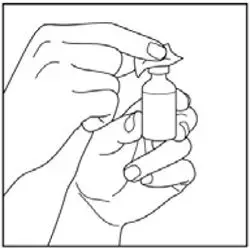 |
| Step 4:
Hold the syringe with the Needle pointing up. Pull down on the Plunger Rod until the Plunger Tip reaches your Dose Line. |
 (Example Dose: (Example Dose: 85 units shown) |
| Step 5:
Push the Needle through the Rubber Stopper of the vial. |
 |
| Step 6:
Push the Plunger all the way in. This puts air into the vial. |
 |
| Step 7:
Turn the vial and syringe upside down and slowly pull the Plunger down until the Plunger Tip is past your Dose Line. |
 (Example Dose: 85 units (Example Dose: 85 units Plunger is shown at 100 units) |
| If there are air bubbles, tap the syringe gently a few times. This lets the air bubbles rise to the top. |
 |
| Step 8:
Slowly push the Plunger up until the Plunger Tip reaches your Dose Line. Check the syringe to make sure that you have the right dose. |
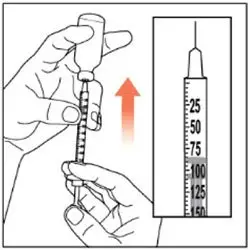 (Example Dose: 85 units shown) (Example Dose: 85 units shown)
|
| Step 9:
Pull the syringe out of the vial's Rubber Stopper. |
 |
Inject
- Inject your insulin exactly as your healthcare provider has shown you.
- Change (rotate) your injection sites within the area you choose for each dose to reduce your risk of getting lipodystrophy (pits in skin or thickened skin) and localized cutaneous amyloidosis (skin with lumps) at the injection sites. Do not inject where the skin has pits, is thickened, or has lumps. Do not inject where the skin is tender, bruised, scaly or hard, or into scars or damaged skin.
Disposal of used syringes
Storage and Handling
- Keep away from heat and out of direct light.
- Do not shake the vial.
Unopened vials:
- Store unopened vials in the refrigerator.
- Do not freeze Humulin R U-500. If it has been frozen, do not use it.
- If unopened vials have been stored in the refrigerator, you may use them until the expiration date.
After the vial has been opened:
- Store opened vials in the refrigerator or at room temperature (up to 86°F [30°C]) for up to 40 days.
- Throw away the opened vial after 40 days, even if there is still insulin left in the vial.
Frequently Asked Questions
-
Why do I need to use a U-500 syringe?
Humulin R U-500 insulin and a U-500 syringe work together to help you inject the correct dose. Using any other syringe may result in dosing mistakes. This may put your life in danger. -
Do I have to convert my Humulin R U-500 insulin dose when I use the U-500 syringe?
No, you do not have to convert your dose. Your health care provider should tell you how much Humulin R U-500 insulin to take in units and when to take it. Your health care provider should show you how to draw up your dose using the U-500 syringe. -
What should I do if I run out of U-500 syringes?
If you run out of U-500 syringes, do not use any other syringe to inject Humulin R U-500 insulin. Call your health care provider or pharmacist for help. You may also call Lilly at 1-800-Lilly-Rx (1-800-545-5979).
Where to get more information and help
- If you have any questions about Humulin R U-500 insulin or U-500 syringes, contact Lilly at 1-800-Lilly-Rx (1-800-545-5979).
- You can also call your health care provider or pharmacist.
- For more information on Humulin R U-500 insulin, go to www.humulin.com
Scan this code to launch the humulin.com website
These Instructions for Use have been approved by the U.S. Food and Drug Administration.
Humulin® is a trademark of Eli Lilly and Company.
Manufactured by:
Eli Lilly and Company, Indianapolis, IN 46285, USA
US License Number 1891
Literature revised: June 2022
LINR500VL-0004-IFU-20220627
Instructions for Use
HUMULIN® R U-500 KwikPen®
(insulin human)
injection, for subcutaneous use
3 mL single-patient-use pen (500 units/mL, U-500)
Read the Instructions for Use before you start taking HUMULIN R U-500 and each time you get another Pen. There may be new information. This information does not take the place of talking to your healthcare provider about your medical condition or your treatment.
Do not share your HUMULIN R U-500 Pen with other people, even if the needle has been changed. You may give other people a serious infection or get a serious infection from them.
HUMULIN R U-500 KwikPen (“Pen”) is a disposable single-patient-use prefilled pen containing 1500 units of HUMULIN R. You can give yourself more than 1 dose from the Pen. Each turn (click) of the Dose Knob dials 5 units of insulin. You can give from 5 to 300 units in a single injection. The plunger only moves a little with each injection, and you may not notice that it moves. The plunger will only reach the end of the cartridge when you have used all 1500 units in the Pen.
Inject HUMULIN R U-500 only with your Pen. Do not transfer insulin from your Pen to a syringe.
People who are blind or have vision problems should not use the Pen without help from a person trained to use the Pen.
How to recognize your HUMULIN R U-500 KwikPen
|
 |
Supplies needed to give your injection
- HUMULIN R U-500 KwikPen
- KwikPen compatible Needle (Becton, Dickinson and Company Pen Needles recommended)
- Alcohol swab
Preparing your Pen
- Wash your hands with soap and water.
- Check the Pen to make sure you are taking the right type of insulin. This is especially important if you use more than 1 type of insulin.
- Do not use your Pen past the expiration date printed on the Label or for more than 28 days after you first start using the Pen.
- Always use a new Needle for each injection to help prevent infections and blocked Needles. Do not reuse or share your needles with other people. You may give other people a serious infection or get a serious infection from them.
Priming your Pen
Prime before each injection.
- Priming your Pen means removing the air from the Needle and Cartridge that may collect during normal use and ensures that the Pen is working correctly.
- If you do not prime before each injection, you may get too much or too little insulin.
Selecting your dose
This Pen has been made to deliver the dose in insulin units that is shown in the Dose Window. Ask your healthcare provider what your dose should be for this Pen.
- You can give from 5 to 300 units in a single injection.
- If your dose is more than 300 units, you will need to give more than 1 injection.
- –
- If you need help with dividing up your dose the right way, ask your healthcare provider.
- –
- You must use a new Needle for each injection and repeat the priming step.
Step 8:
|
  Example: 80 units  Example: 125 units |
- The Pen will not let you dial more than the number of units left in the Pen.
- If your dose is more than the number of units left in the Pen, you may either:
- –
- inject the amount left in your Pen and then use a new Pen to give the rest of your dose,
or - –
- get a new Pen and inject your full dose.
- It is normal to see a small amount of insulin left in the Pen that you cannot inject. Do not transfer this to a syringe. Severe overdose can happen.
Giving your injection
- Inject your insulin as your healthcare provider has shown you.
- Change (rotate) your injection sites within the area you choose for each dose to reduce your risk of getting lipodystrophy (pits in skin or thickened skin) and localized cutaneous amyloidosis (skin with lumps) at the injection sites. Do not inject where the skin has pits, is thickened, or has lumps. Do not inject where the skin is tender, bruised, scaly or hard, or into scars or damaged skin.
- Do not try to change your dose while injecting.
After your injection
- Put your used Needles in a FDA-cleared sharps disposal container right away after use. Do not throw away (dispose of) loose Needles in your household trash.
- If you do not have a FDA-cleared sharps disposal container, you may use a household container that is:
- –
- made of a heavy-duty plastic,
- –
- can be closed with a tight-fitting, puncture-resistant lid, without sharps being able to come out,
- –
- upright and stable during use,
- –
- leak-resistant, and
- –
- properly labeled to warn of hazardous waste inside the container.
- When your sharps disposal container is almost full, you will need to follow your community guidelines for the right way to dispose of your sharps disposal container. There may be state or local laws about how you should throw away used needles and syringes. For more information about safe sharps disposal, and for specific information about sharps disposal in the state that you live in, go to the FDA's website at: http://www.fda.gov/safesharpsdisposal
- Do not dispose of your used sharps disposal container in your household trash unless your community guidelines permit this. Do not recycle your used sharps disposal container.
- The used Pen may be discarded in your household trash after you have removed the needle.
Storing your Pen
Unused Pens
- Store unused Pens in the refrigerator at 36°F to 46°F (2°C to 8°C).
- Do not freeze HUMULIN R U-500. Do not use if it has been frozen.
- Unused Pens may be used until the expiration date printed on the Label, if the Pen has been kept in the refrigerator.
In-use Pen
- Store the Pen you are currently using at room temperature up to 86°F (30°C). Keep away from heat and light.
- Throw away the Pen you are using after 28 days, even if it still has insulin left in it.
What you should know if you are switching to HUMULIN R U-500 KwikPen
Ask your healthcare provider what your dose should be for your Pen in insulin units. Always follow your healthcare provider's instructions for dosing.
| If you are: | It is important to know: |
| Switching from HUMULIN R U-500 vial (and syringe) | Your Pen may measure your dose differently. The markings in the Dose Window may not be the same as the markings on the syringe you used in the past. If you were using the U-500 syringe to administer your dose, the markings on the syringe may be the same as the markings in the Pen Dose Window. Ask your healthcare provider what dose in insulin units you should dial on your Pen. |
| Switching from another type of insulin device or pen. | The HUMULIN R U-500 KwikPen is different from other pens. It dials 5 insulin units with each click of the Dose Knob. Do not select your dose by counting clicks. You may get too much insulin or you may not get enough insulin. |
General information about the safe and effective use of your Pen
- Keep your Pen and Needles out of the sight and reach of children.
- Do not use your Pen if any part looks broken or damaged.
- Always carry an extra Pen in case yours is lost or damaged.
Troubleshooting
- If you cannot remove the Pen Cap, gently twist the cap back and forth, and then pull the cap straight off.
- If it is hard to push the Dose Knob:
- –
- Pushing the Dose Knob more slowly will make it easier to inject.
- –
- Your Needle may be blocked. Put on a new Needle and prime the Pen.
- –
- You may have dust, food, or liquid inside the Pen. Throw the Pen away and get a new Pen.
If you have any questions or problems with your HUMULIN R U-500 KwikPen, contact Lilly at 1-800-LillyRx (1-800-545-5979) or call your healthcare provider for help. For more information on HUMULIN R U-500 KwikPen and insulin, go to www.humulin.com.
Scan this code to launch www.humulin.com
These Instructions for Use have been approved by the U.S. Food and Drug Administration.
HUMULIN® and HUMULIN® KwikPen® are trademarks of Eli Lilly and Company.
Manufactured by:
Eli Lilly and Company
Indianapolis, IN 46285, USA
US License Number 1891
Copyright © 2015, 2022, Eli Lilly and Company. All rights reserved.
|
HUMULIN R U-500 KwikPen meets the current dose accuracy and functional requirements of ISO 11608-1. |
Document revision date: June 2022
LINR500KP-0005-IFU-20220627
VIAL PACKAGE CARTON – HUMULIN R U-500 Vial 20 mL 1ct
NDC 0002-8501-01
20 mL
Humulin® R U-500
(insulin human)
injection
10,000 units per 20 mL
500 units per mL
Rx only
500 units/mL
Warning - Highly Concentrated
IMPORTANT: Use only with a U-500 syringe.
20 mL multiple-dose vial
For subcutaneous use only
www.humulin.com
Lilly
KWIKPEN PACKAGE CARTON – HUMULIN R U-500 KwikPen 3 mL (500 Units per mL)
Dispense in this sealed carton
NDC 0002-8824-27
Humulin®R U-500
KwikPen®
(insulin human)
injection
For Single Patient Use Only
prefilled insulin delivery device
500 units/mL
500 units per mL
2 x 3 mL prefilled pens
Rx only
For subcutaneous use only.
Read Humulin®R U-500 KwikPen® Instructions for Use.
NEEDLES NOT INCLUDED
This device is recommended for use with Becton, Dickinson and Company's insulin pen needles.
| HUMULIN
R U-500
insulin human injection, solution |
||||||||||||||||||||
|
||||||||||||||||||||
|
||||||||||||||||||||
|
||||||||||||||||||||
|
||||||||||||||||||||
|
||||||||||||||||||||
| HUMULIN
R U-500 KWIKPEN
insulin human injection, solution |
||||||||||||||||||||
|
||||||||||||||||||||
|
||||||||||||||||||||
|
||||||||||||||||||||
|
||||||||||||||||||||
|
||||||||||||||||||||
| Labeler - Eli Lilly and Company (006421325) |




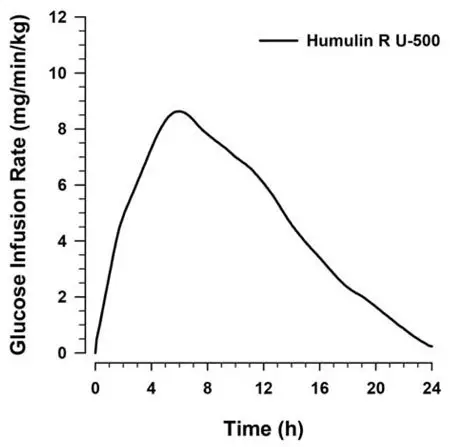



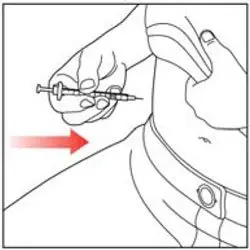
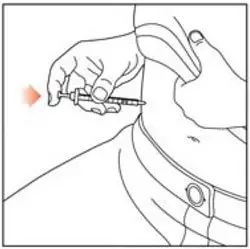
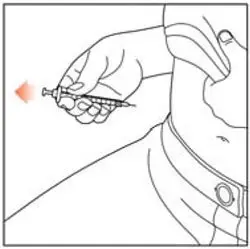










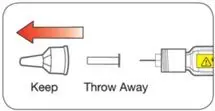

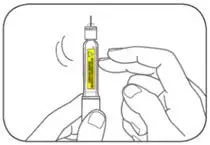










 DO NOT TRANSFER TO A SYRINGE
DO NOT TRANSFER TO A SYRINGE 